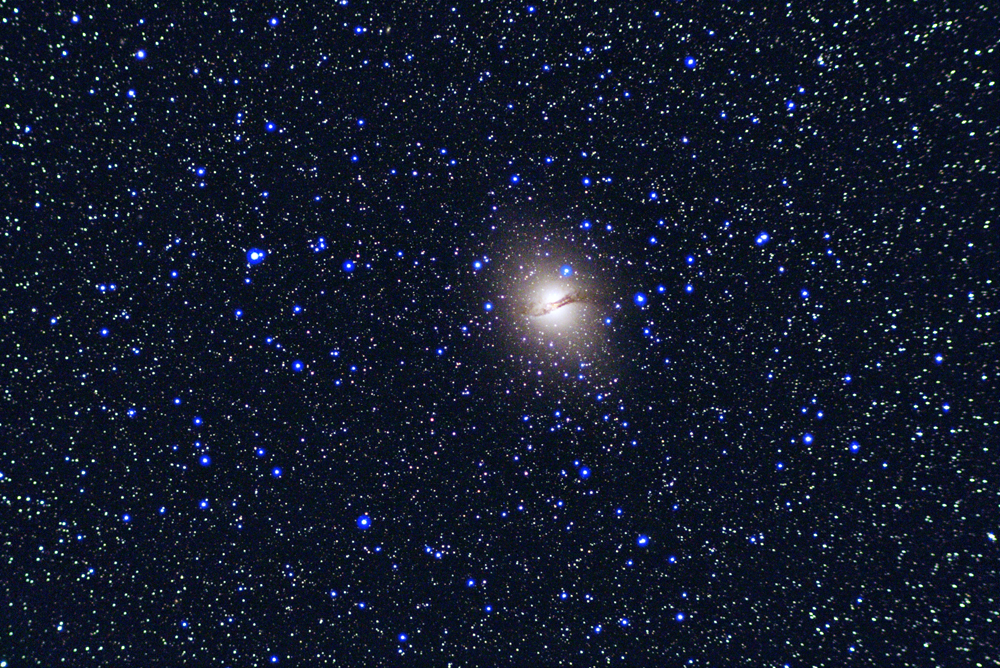
314 second exposure. Modified Canon Digital Rebel DSLR camera.
5" f/5 refractor at prime focus.

A large and bright, elliptical galaxy, NGC 5128 is one of the most interesting galaxies in the southern skies. It is bright enough to be visible in binoculars, and can be observed with the naked eye under very dark skies. The distance to the galaxy is somewhat uncertain, but appears to be about 10 million light years, making it slightly more distant than M81. If this is the case then NGC 5128 is the most distant object visible to the naked eye. In an 8" telescope the dark dust lane crossing the centre of the galaxy is very prominent. The presence of such a prominent dark lane makes for one of the most curious effects for the visual observer. Observing this galaxy, the eye perceives the glow of the galaxy spreading out to a certain distance. However, if you look at the dust lane, particularly with averted vision, the dark of the dust lane appears to reach out further than the glow of the galaxy! I believe this is caused by the eye being better at discerning dark against light rather than vice-versa. This means that it is easier to follow the dark lane further than the galaxy glow, even though the dark lane is visible only where it passes in front of the glow.
NGC 5128 is one of the largest galaxies known, with an estimated mass nearly 20 times that of the Milky Way. It is also one of the strongest sources of radio waves in the southern sky, and is most commonly known as Centaurus A radio galaxy.